One of the main tram routes in Prague is the 22. This goes all the way from Bíla Hora, the site of one of central Europe’s most famous battles, to Hostivař. For a long time, this wasn’t a route I had any great familiarity with but since moving to Vršovice in Prague 10,it’s one that I take daily. Going from my starting point at Krymská and heading just a few stops to Vršovické Námĕstí, when I step off the tram I can see floodlights just down the hill. These lights poking up into an otherwise fairly unremarkable horizon in this part of the city, spring from the ground of Ďolíček – the dimple in English – home of Bohemians Prague 1905.
Football began in the Czech lands in much the same manner it did in many other European countries. An English-owned textile factory in Náchod, near to the Polish border, where English workers were sent, was amongst the original sites to embrace the game in the 1880s. In Prague, a regatta club was amongst the first who were good enough to play the game in public. In 1892, SK Slavia Prague were founded. A year later, their great rivals AC Sparta Prague formed. The Czech Football Association came in 1901, to administer the game in the region. This was on the back of an authorised translation of the Football Association rules in 1897. By 1907 the Czech FA was a member of FIFA. From these beginnings emerged a footballing culture that grew in the Czech region over the course of the twentieth century. In Prague, football grounds began to spring up – usually on vacant lots in the city centre or on the suburban edges. The football stadium comes in many shapes and sizes from bowls like SK Slavia Prague’s recently renovated Eden Arena to lop-sided efforts like Bohemians 1905’s home ground.
I’ve been visiting the Czech capital for several years now and have sampled many of its footballing delights. Initially I took a shine to Sparta but now that I live much closer to Ďolíček and having discovered a fairly unsettling right-wing element in the support of the more famous club, Bohemians increasingly seemed like the team for me. I took myself down to the Dimple to shell out the very reasonable sum of 1 300Kč (roughly €48) for a season ticket. I moved to Prague to begin teaching English and to live in this wonderful city. Bohemians have a reputation for being an open friendly club with an international support drawn from locals in the Vršovice area and many expats too. On all previous visits I’ve had to Ďolíček I found it a lively entertaining and welcoming atmosphere; frenetic but not threatening.
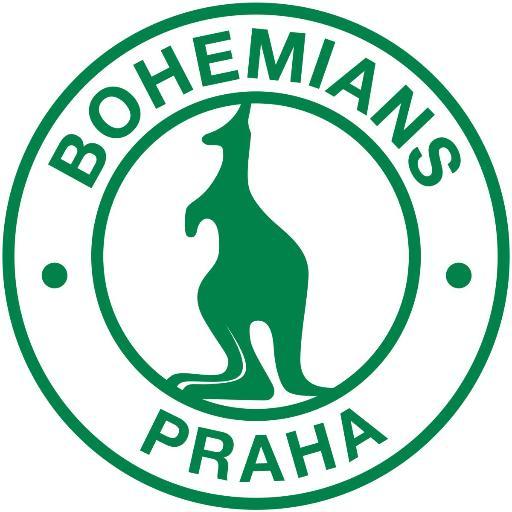
One thing which appealed to me about Bohemians is that they are very much the underdogs of Prague’s bigger clubs very much the fourth team among Sparta, Slavia and DUKLA in terms of prestige. Aside from that, like my beloved Waterford United back home in Ireland, they’re frankly a little bit crap, thus following them means I won’t be spoiling myself with success any time soon. Their ground, this dimple of theirs, has a certain League of Ireland charm about it. It only has three stands for a start – a terraced end section B1, where the ultras go and where the party happens at games, a large covered stand to the right of this. and a small open bank of bucket seating to the left of B1. Another appealing element of Bohemians is that the club was very nearly made extinct a number of years ago due to poor financial management by its previous owners. Their story in fact is reminiscent of many in the League of Ireland in this regard and they are in a country utterly fanatical about its football, the only professional club in the top tier with a supporter’s trust. Thus the ethos is one which very much chimes with my own views on how a football club should be run and to what purpose. The club is inclusive, many of the fans actively anti-fascist, with links to St. Pauli of Hamburg.
Choosing a team as an expat is a weird business, trying to find a club that suits your particular needs i.e. one that doesn’t spoil you with success, reminded me of course of Nick Hornby’s relationship with Cambridge United in Fever Pitch, but I think that if you are a football fan, it is as important a part of helping you to settle into a new city and country as just about any other activity. Most fans are one club fans for life. But that’s much easier if you’re also a one city person for life too. Expat life being what it is however having a football club to claim as your own is a kind of access to the sort of instant imagined communities which all football fans thrive on.
On the opening day of the season Bohemians took on FC Fastav Zlín on a glorious morning – between 23 and 25 degrees Celsius not a cloud to be seen. Exactly what we dreamt summer soccer in Ireland would be but rarely is. The curious thing is that this isn’t summer soccer, but the Czech winter being especially cold and hard, there’s an extended winter break so the season starts late in summer and ends early the following year. As I ambled to the ground I spotted the usual array of Bohemians fans in their green and white, sporting kangaroos on their t-shirts scarves and hats. The animal is on the crest of this curious club because of a tour undertaken by Bohemians in 1927 to Australia when the team were gifted one to bring back to Prague Zoo. Thus the club are known as the Klokans or Kangaroos. Near the ground on match day, you’ll find the U Klokana (at the Kangaroo literally) packed with fans grabbing pre-match pints. Not that this is strictly necessary. Like every ground in the Czech Republic, Bohemians have plenty of beer stalls where you can get draught lager which can be enjoyed in view of the pitch.
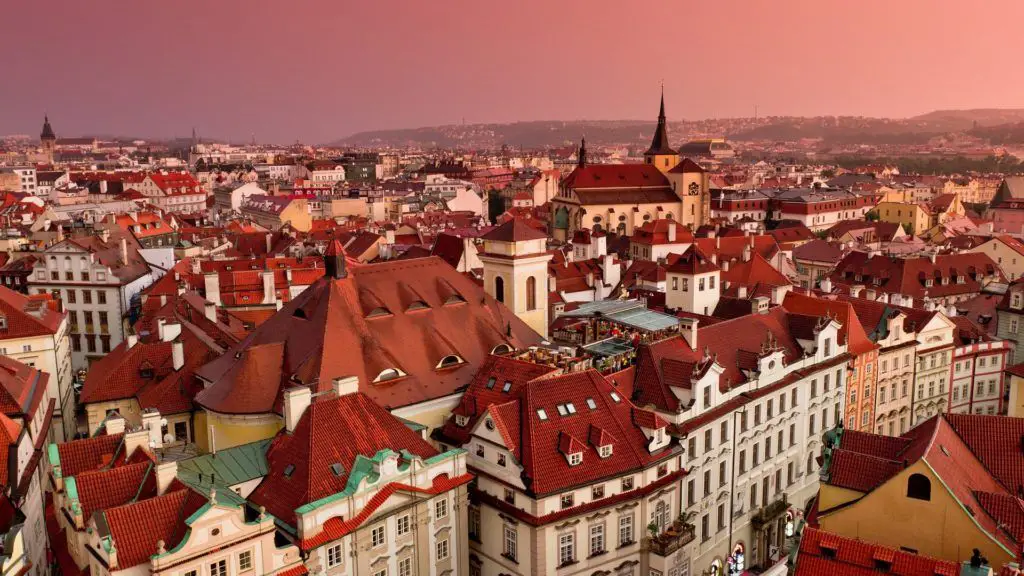
Prague is a city of smells. Standing on the open terrace sun-blazing there was the smell of beer being poured from the taps piles of sausages sizzling on the grills cigarette and marijuana smoke drifting across from various parts of the stone steps. Most of all there was that smell of anticipation of a new season. And for me, the nervy start of a new relationship with a football club I’ve only had a passing acquaintance with until now. As the match kicked off, the Bohemians Rude Boys (this is what the ultras call themselves and ska, two-tone and mod insignia are present throughout the ground) began in fine voice led by their capo. But then disaster struck, his loud speaker failing him within five minutes. After banging it a few times in vain, he smashed it off the ground in front of him, and with renewed vigour, began leading the crowd again. This was a capo going acapella. Although this made his job difficult he persevered admirably and ensured, especially in the second half, that the crowd got fully behind the Bohemians performance. At half time, emerging onto his stand with a fresh pint in the still hammering sun he guzzled about three-quarters of the pint in two gulps. This was thirsty work.
Around me the fans sung with barely a break arrayed not just in their own club colours, but in those of Celtic, Shamrock Rovers and even St. Patrick’s Athletic. At times frenetic farcical and full-blooded this was a solid opening performance from Bohemians even if an equalizing goal remained elusive. After the game as I waited for my tram to start the trek to Riegrovy Sady for a pint in Prague’s most well-known beer garden the chant ‘Bohemka do toho’ ‘Bohemians above all’ rang in my ears. I had a feeling I was going to like it here.
In The Winter’s Tale one of Shakespeare’s later works Bohemia – which corresponds roughly with modern-day Czech Republic – was famously given a coastline. This despite the fact that the Czech Republic is (and always has been) landlocked. One of the problems of being from Ireland and living in a landlocked country is the lack of a sea. This is difficult for two reasons: first of all having grown up not ten minutes drive from beaches in Waterford, not to be near the ocean in the summer is agony. The nearest beach is in Croatia. The other killer is a lack of fresh seafood. The Czech Republic is not renowned for the quality in this culinary regard. With most fish coming from fresh water sources – carp is something of a Czech specialty – the rest tends to be frozen and has to have come a long distance. Some days all you want in the world is fish and chips. There is at least one establishment in Prague, aptly enough called Ryby and Chips, which serves the dish that if not exactly the equal of what’s on offer at home, is as good an effort as I’m likely to get within a few hundred miles and so ahead of my first experience of a Prague derby with my newly adopted club I decided to sample the fare.
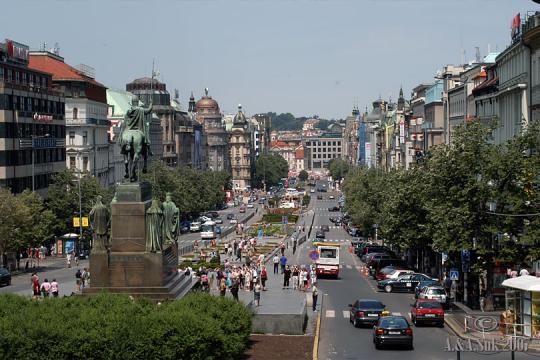
Not just a city of smells Prague is also a city of squares. These open public spaces are important not just in terms of providing a place to sit and chat to encounter people – but they are important as places of congregation. They are sites for protest and debate. Václavské Námĕstí is famous for the images of it throughout twentieth century Czech history: the Nazis made use of its great boulevards for marches; under Communism May Day parades passed through here; in 1968, when socialism with a human face was crushed by the arrival of Soviet tanks, their presence on Václavské Námĕstí was part of the theatre of takeover. It was here that Jan Palach in January of 1969, seeing no other way to register his disgust at what happened after the Prague Spring was crushed, burned himself alive on the steps of the National Museum that stands at the top of the square. And, in 1989 when the Velvet Revolution climaxed, it did so in the same spot. The squares of Prague are heavy with the weight of history.
On derby weekend the march began at Námĕstí Republiky. Ahead of the tussle against Sparta Prague across the river in Letná, Bohemians supporters congregated on this famous square to begin our long march along Revolucní, and across Stefanikuv Most through the Letná tunnel to emerge by Sparta’s ground – deep in hostile territory. From here around the corner from Obecní Dům we began our march to Letná Stadion to face Sparta. On Štefáníkův Most we were joined by a substantial contingent of riot police before entering the Letná tunnel, and when we emerged on the other side, we were brought the long way around to the away end of the ground. We had allocated seating, but more or less treated it like the section behind the goal in Ďolíček – the array of Bohemians stickers on seats and railings attesting to the fans’ frequent presence here. At the beginning, in memory of recently deceased vice-chairman and one of the architects behind the saving of the club in 2005, Vladislav Suchy, a black banner was displayed with his initials and a cross in his memory. This was solemn but the fervour displayed by the fans during the game was as much memorial to him as the minute’s silence that started the match. The game got underway but a little after twenty minutes it was turned into an uneven affair thanks to David Bartek’s sending off following a second yellow. The class that earned Sparta a deserved 2-2 draw in the Europa League the previous Thursday night away to Schalke 04 was on full display here. Rather than that midweek fixture’s exertions causing fatigue Sparta seemed energised by their successful adventure abroad. and by sheer weight of pressure they racked up the goals to inflict a heavy defeat in my first ever Prague derby. Despite going down 3-0 to Sparta the Bohemians fans rarely let up the noise. It was agony to watch at times, but the party atmosphere – the sheer defiance that seemingly comes with being a Bohemians fan never let up. The Rude Boys, Barflies and everyone else smoked, drank, sang and ate in the face of impending defeat. So it was, from Námĕstí Republiky early in the afternoon to Stadion Letná under the cover of the floodlights – whatever else the score might have said onwards we chanted: “Bohemians: Nejlepší Praze!” (Bohemians: The Best In Prague!)
Written by David Toms for Póg Mo Goal Magazine Issue 3
David Toms is a sport historian from Waterford now based in the Czech Republic’s capital city of Prague and is the author of Soccer in Munster: A Social History 1877-1937.
You can buy the third issue of Póg Mo Goal Magazine here
Illustration by Nils Gustafsson
Nils Gustafsson is a Gothenburg-based designer. In the past he has worked with BK Häcken on campaign material and on their Bravida Arena stadium. www.nilsgustafsson.com


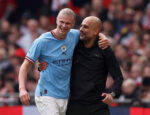



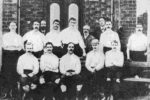
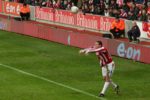

Recent Comments